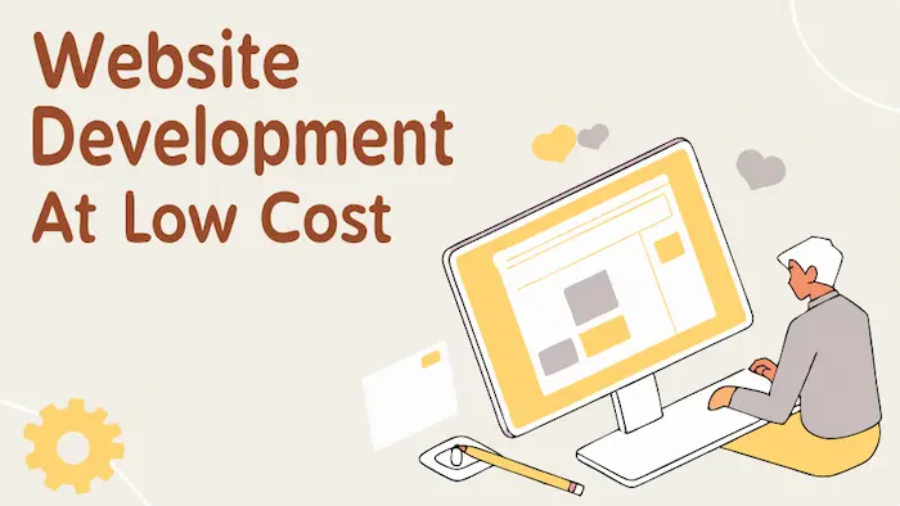Fonts are more than just letters on a screen. They define personality, create emotion, and significantly impact how users engage with a website. The right choice can make a site feel professional and inviting, while the wrong one can make it look outdated or difficult to navigate.
In this guide, we’ll explore how fonts impact web design, their role in usability and branding, and best practices for choosing the right typefaces. Additionally, we’ll touch on how font selection can influence affordable website development at low cost while maintaining aesthetics and functionality.
Why Fonts Matter in Web Design?
Typography is a core component of web design. It influences readability, user experience, and even conversion rates. Here’s why fonts are critical:
- Readability & Accessibility – The easier a font is to read, the more likely users will engage with content.
- Brand Identity – Fonts communicate a brand’s personality (e.g., serious, playful, modern, or classic).
- User Experience (UX) – A well-chosen font improves website navigation and interaction.
- SEO & Performance – Optimized typography can enhance engagement, reducing bounce rates and boosting rankings.
How Fonts Affect User Perception?
Fonts play a psychological role in how users interpret content. The type of font used can impact trust, professionalism, and emotional response.
| Font Type | Common Perception | Best Use Case |
|---|---|---|
| Serif Fonts (e.g., Times New Roman, Georgia) | Traditional, trustworthy, formal | News websites, financial institutions, academic websites |
| Sans-Serif Fonts (e.g., Arial, Helvetica, Open Sans) | Modern, clean, minimal | Tech companies, startups, blogs, SaaS websites |
| Script Fonts (e.g., Pacifico, Lobster, Dancing Script) | Elegant, creative, friendly | Wedding websites, photography portfolios, fashion brands |
| Monospace Fonts (e.g., Courier, Consolas) | Technical, precise, coding-related | Developer blogs, coding platforms, tech-heavy sites |
Typography and Website Performance
Fonts contribute to site loading speed, which affects performance and SEO. Large font files slow down websites, leading to higher bounce rates.
Best Practices for Performance-Optimized Fonts
- Use Web-Safe Fonts – Google Fonts (like Roboto or Open Sans) load faster than custom fonts.
- Limit the Number of Fonts – Stick to 2-3 fonts per website.
- Optimize Font Loading – Use
font-display: swap;in CSS to ensure text appears instantly while the font loads.
- Choose Variable Fonts – These reduce file size by combining multiple weights into one file.
Choosing Fonts for Affordable Website Development at a Low Cost
When building a budget-friendly website, typography plays a key role in maintaining professionalism without extra costs.
How to Choose Budget-Friendly Fonts?
- Use Free Google Fonts – They’re widely supported, optimized, and visually appealing.
- Minimize Font Variants – Avoid unnecessary weights (e.g., bold, italic) to reduce load times.
- Use System Fonts – Built-in fonts like Arial and Georgia load instantly and require no downloads.
Recommended Free Fonts for Web Design
| Font Name | Style | Best For |
|---|---|---|
| Open Sans | Sans-serif | Business, blogs, SaaS |
| Montserrat | Sans-serif | Startups, portfolios |
| Playfair Display | Serif | Fashion, luxury brands |
| Lato | Sans-serif | Corporate, agencies |
| Poppins | Sans-serif | Modern, creative sites |
Font Pairing: The Art of Mixing Fonts
Combining fonts effectively can create visual harmony and hierarchy. Here are some proven pairings:
- Serif + Sans-Serif – Playfair Display (titles) + Open Sans (body)
- Bold + Light – Montserrat Bold (headers) + Lato Light (paragraphs)
- Condensed + Regular – Poppins Semi-Bold (headlines) + Roboto Regular (body)
Common Font Mistakes to Avoid
Many designers fall into these font traps:
- Too Many Fonts – More than 3 fonts create clutter and inconsistency.
- Illegible Fonts – Fancy scripts or extra-thin fonts reduce readability.
- Improper Line Spacing – Ideal line-height is 1.5x the font size for better readability.
- Overuse of Uppercase – ALL CAPS can feel aggressive if overused.
- Ignoring Contrast – Light fonts on a white background cause readability issues.
SEO & Typography: Do Fonts Affect Rankings?
While fonts themselves don’t impact SEO, they indirectly influence rankings by affecting user experience. Google considers bounce rate, session duration, and engagement, all of which are linked to readability.
SEO-Friendly Typography Tips
- Use Clear, Readable Fonts – Avoid decorative fonts for body text.
- Ensure Mobile Compatibility – Fonts should be legible on all screen sizes.
- Optimize for Speed – Avoid heavy font files and load only necessary styles.
1. What are the best fonts for website readability?
Sans-serif fonts like Open Sans, Lato, and Roboto are highly readable and widely used on modern websites.
2. How many fonts should I use on a website?
It’s best to use two to three fonts – one for headings, one for body text, and optionally one for accents.
3. Do fonts affect website speed?
Yes, larger font files slow down page load times. To optimize, use web-safe fonts or Google Fonts with fewer weight variations.
4. How can I choose the best font for my website?
Consider brand identity, audience, and readability. Test different fonts in real user scenarios before finalizing.
5. What’s the difference between serif and sans-serif fonts?
Serif fonts have decorative strokes (e.g., Times New Roman), while sans-serif fonts are clean and modern (e.g., Arial).
Conclusion
Fonts are an essential yet often overlooked part of web design. They impact brand perception, user experience, and SEO. By choosing legible, lightweight, and responsive fonts, you can create a professional website that is visually appealing and functional.
For those looking for Affordable Website Development at low cost, using free, web-optimized fonts like Google Fonts can enhance aesthetics without additional costs.
